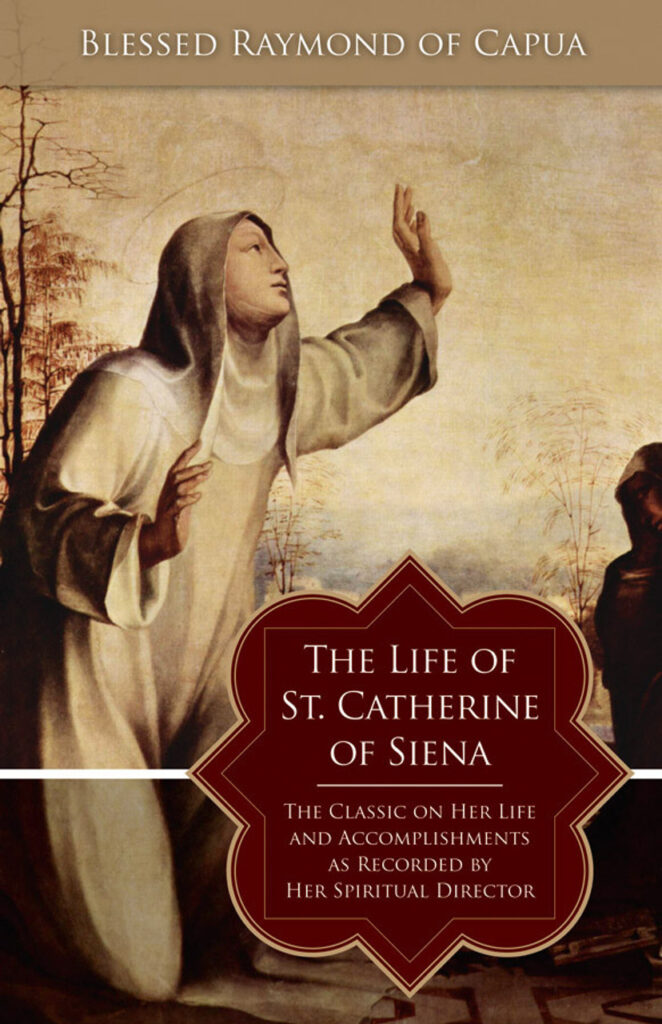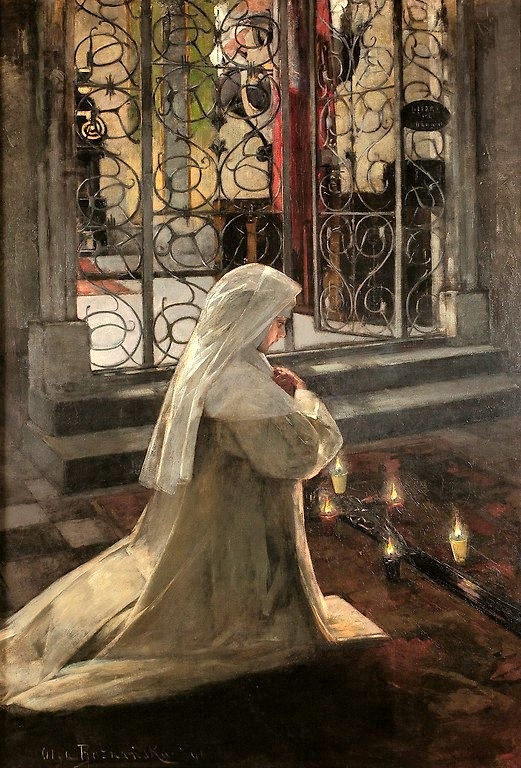When St. Catherine perceived that the more charitable she was towards her neighbor the more she would be acceptable to the Lord, she prepared and equipped herself as thoroughly as she could to succor the needy. But as she had nothing of her own – being a true religious who had determined to observe the three main vows – so, not wishing to make use of anyone else’s property, she went to her father and asked him for permission to give alms to the poor according to her conscience out of what the Lord granted him and his family.
Her father readily agreed, for he was delighted to see his daughter advancing in the way of the Lord. And this was not a private agreement, for he made it an order for the whole house, saying, “Let no one try to stop my dearest daughter from giving alms, for I give her a free hand to give away anything I have in the house.” Having obtained this permission, the holy virgin saint began to give her father’s goods away lavishly; but as she possessed the gift of discretion in an especially high degree she did not give things away indiscriminately but was most generous to those she knew to be truly in need, even if they had not asked for anything.
In the meantime, it had come to her ears that not far from her home there were a number of needy families who would not come and knock at the door of her house because they were ashamed to ask for alms, but who were nevertheless suffering great poverty. She did not turn a deaf ear to this and early one morning, bearing a load of grain, wine and oil and whatever else she could find, she went off to the house of these poor people alone and unobserved like St. Nicholas. Providentially she found the door open, and being thus able to deposit what she had brought with her inside the house, she closed the door and hurried away.
One day she fell ill, and her whole body swelled up; she was unable to get up or stand on her feet. Hearing that there was a poor widow living nearby with sons and daughters all dying of hunger, she was at once moved by compassion and, during the night, she prayed to her Heavenly Bridegroom to grant her sufficient health to allow her to help the poor woman.
She got up before dawn and went round the house. Managing to find a small sack, she filled it with grain; then she got a big bottle and filled it with wine, and a smaller bottle and filled it with oil; then she found all the eatables she could and carried them one by one. It seemed impossible that she could take them all at once all by herself, considering the distance to the widow’s house; nevertheless, doing the best she could, that is to say, taking one thing in her right arm, another to her girdle and hoping for divine aid, she tried to lift them all at once.
And immediately, with the miraculous help of the Lord, she lifted the entire load up as easily as is it had lost all its weight. She confessed to me and her other confessors that she carried all this load as easily as thought it had been a wisp of straw, whereas it must in fact have weighted about a hundredweight.
As soon as the early morning bell rang to allow people to walk about out of doors, the holy virgin, young as she was, and despite her swollen body, emerged from the house bearing her pious load and hurried off as fast as she could towards the widow’s house as thought she was perfectly well and had nothing to carry.
Gradually, as she got nearer her destination, the load grew heavier and heavier, making it almost impossible for her to go on. Regarding this as a joke being played on her by her Heavenly Bridegroom, she called confidently on the Lord, and to gain further merit lifted her burden with difficulty and reached the door of the needy woman’s house.
Providentially it was ajar; so she put one of her arms through the crack, pushed it wide open, and deposited her burden inside. But as she put it down it made such a noise that it woke the poor woman up. Whereupon Catherine tried to hurry away, but found herself unable to: the Lord would persist in having his little joke with her, and the strength which through her prayers had been granted her to enable her to get up out of bed had by now been taken away from her completely and she was obliged to lie there in worse state than ever, so weak that she was quite unable to move.
Saddened, but at the same time amused, she said to her Heavenly Bridegroom, “Why sweetheart, have you deceived me like this? Do you think it is a nice thing to do, to mock me and upset me by making me lie here? Do you want to show me up before all the people in the house here, and all the people who will soon be passing along the street? Have you forgotten the mercies you deigned to show your most unworthy servant? I beg you, give me my strength back, so that I may return home.” And she struggled to get up, saying to herself as she did so, “You’ll move, even if I have to die for it!”
In this way, crawling rather than walking, she had managed to move a little distance away, though not far enough, when the poor widow, who had by now got up, recognized the habit of her benefactress was wearing and guessed who she was. Then her Heavenly Bridegroom seeing how deeply depressed his bride was, and being in a way unable to endure this any longer, gave her some of her original strength back, so that after much struggling Catherine managed to arrive home before it was fully daylight and, thoroughly worn out, get back into bed. For her illness was not governed by the ordinary rules of nature but by what the Most High allowed, as, by God’s will.
This article is taken from a chapter in The Life of St. Catherine of Siena by Blessed Raymond of Capua which is available from TAN Books.









